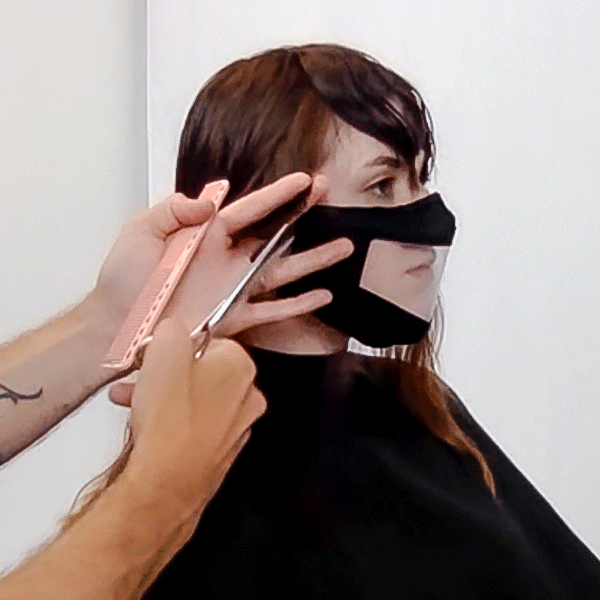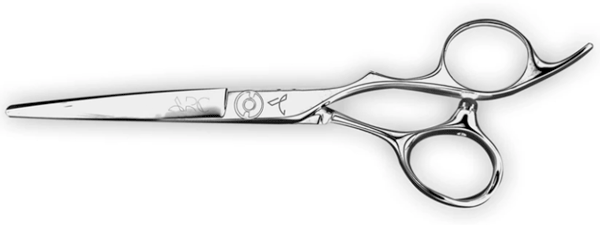Shag Cutting: Why The Corners Are Crucial
Cutting Education: 3 Tips For A Blended Face Frame
Cutting a shag isn’t one-size-fits all and corners are HUGE when taking a shag from traditional to a mullet. What is a corner you ask? We tapped Nashville-based cutter Brian Hickman (@brianhickman1) to break down everything you need to know about this section and why it’s so important for a connected haircut and a seamless growout. Scroll down for everything you need to know and click here to become a BTC-U Member to receive unlimited access to Brian’s course on BTC University!
What Is A Corner?:
The corner is a section that connects the face frame to the layers. “It is important because it creates a fluid line from the front to the back. Perfecting this section really helps a haircut growout well and avoids any holes or hiccups on the side of the head,” Brian explains.
What We Learned:
You can learn Brian’s full technique in his 90-minute course, but we’re teasing these tips you need to know now!
Tip #1: How To Determine Corner Placement
“All of the layers are cut to the corner,” Brian explains. “So it is a really important part of connecting the haircut, but also allows the haircut to be customized.”
Here’s a quick cheat sheet:
- Use the ear as a guide, depending on the type of face frame:
- In front of the ear leaves more weight and creates a softer result
- The center of the ear is a more gradual, blended face frame
- Behind the ear creates a stronger, defined face frame
- Bringing the corner up into the low part of the recession with little to no internal layering will result in a more bob-like shag with subtle face-framing and more weight in the back.
- The farther back the corner is placed, the more mullet-like the result will be.
Pro Tip: Brian likes to begin his cuts wet and let the hair air dry during the process, allowing the client’s natural texture to create the shape while cutting. He uses the PARAGON II from ARC Scissors™ because they are perfect for both wet and dry cutting, so there is no need to switch tools in the middle of the service.
Do You Also Cut Wet to Dry? Click Here To Purchase A Pair
Of PARAGON II From ARC Scissors™!
Tip #2: How To Cut A Shag Corner vs Mullet Corner
For a traditional shag, Brian makes sure to start the corner section with a vertical parting starting from the apex of the head to the center or in front of the ear. Then, overdirect the section forward and use a slide cutting motion to gradually blend that section from the longest point of the face frame down to the length.
To cut a mullet or a more prominent face frame, take the same vertical parting but have it end at the highest point of the ear or even behind it. Then, Brian cuts a straight horizontal line across the section. “I just kind of lob it off. I will still blend it slightly to the fringe, but I will use the back corner of this section to blend into the back instead of blending the entire front,” he explains.
Tip #3: Give Clients Style Versatility With This Secret Section
Give clients the option of having a mullet-style, without taking anything away from their shag with a tucked-away corner. This hidden section starts below the fringe and is only visible when the client tucks their hair behind their ear.
Start by taking a diagonal back section at the hairline that begins under the fringe and ends in front of the ear. To determine the length, Brian uses the lip as a guide and cuts straight across to create the baseline. Then making sure the fringe is completely out of the way, Brian overdirects the entire section forward using a point cut so the shortest length sits underneath the fringe.
Slide To See The Before & After!

Have Questions? Brian Has Answers!
One of the benefits of watching a course on BTC University? Artists are able to answer your questions in REAL TIME! Here are some technical questions viewers had for Brian during his livestream:
Question: How do you explain corners to clients?
Answer: “So it is pretty much the connecting point between the front and the back. But a lot of what I discuss with clients is what kind of haircut they are going for. Do they want it to feel more like a bob and have a lot of strength in the front or something different? Inspiration photos are great because it gives us a starting point of the style they want to achieve. We can discuss what they like about the picture and then I am able to customize the haircut to enhance and highlight their features.”
Q: Should all shags and mullets have a fringe to complete the look?
A: “Personally, yes. I love the exaggeration that the shape creates and if the corners are right and everything is connected the growout is really nice. It’s also all about perspective, and you can really customize a fringe or face frame to highlight the client’s face and give them a cut that is just for them.”
More from
ARC™ Scissors
-
Blowouts
Bob Styling Guide: 5 Ways To Style Short Hair
-
BTC Hair Trend Report
The Biggest Haircut Trends of 2024
-
Dry-Cutting
Bang Breakdown: How To Cut 2024’s Top Fringe Trends
-
Dry-Cutting
2024 Fringe Guide: How To Consult, Cut & Style Trendy Bangs
-
BTC University
10 Gifts & Stocking Stuffers on Every Hairdresser’s List This Year
-
BTC Events
BTC “On Tour” Nashville Recap: Everything You Missed
-
BTC Hair Trend Report
The Biggest Haircut Trends of Fall & Winter 2023
-
BTC Hair Trend Report
Layering Guide: How To Cut & Style With Confidence
-
Bobs
The ’90s Bob: How To Cut & Style This Trending Haircut
-
Facebook Lives
Volume Guaranteed: Try This Layering Technique For Fine Hair
-
Barbering
How To Style The Biggest Men’s Summer Trends
-
Bobs
The Biggest Haircut Trends of Summer 2023
-
Bobs
The French Bob: How to Cut it
-
Bobs
The Bixie: 3 Cutting Techniques to Master the Look
-
Brunette
Trend Breakdown: Hailey Bieber’s Glazed Brunette
-
Barbering
2023’s Top 9 Hair Trends For Men
-
BTC Hair Trend Report
2023 Fringe Guide: How To Cut This Year’s Biggest Trends
-
BTC Hair Trend Report
2023 Hairstyling: 11 Trends You Need To Know
-
BTC Hair Trend Report
Invisible Layers: What This Haircut Trend Really Means
-
BTC Hair Trend Report
2023’s Biggest Haircut Trends
-
Bobs
Hailey Bieber’s “Preppy, Contoured Bob” Trend: What You Should Know
-
BTC University
4 Styling Secrets For Butterfly Layers
-
This Year’s BIGGEST Products: 2022’s Most Talked About
-
Bobs
The Biggest Winter Haircut Trends To Kick Off 2023










